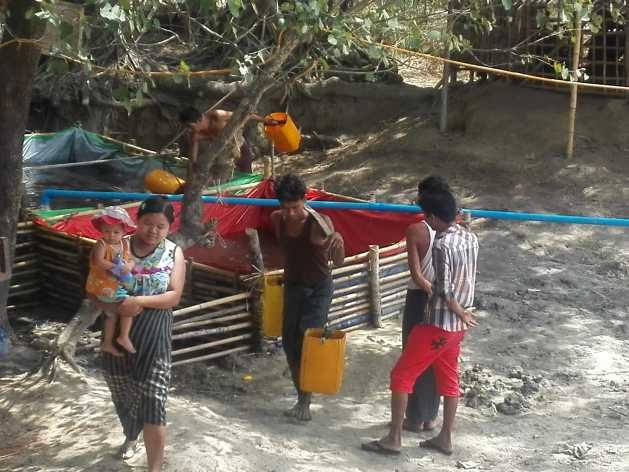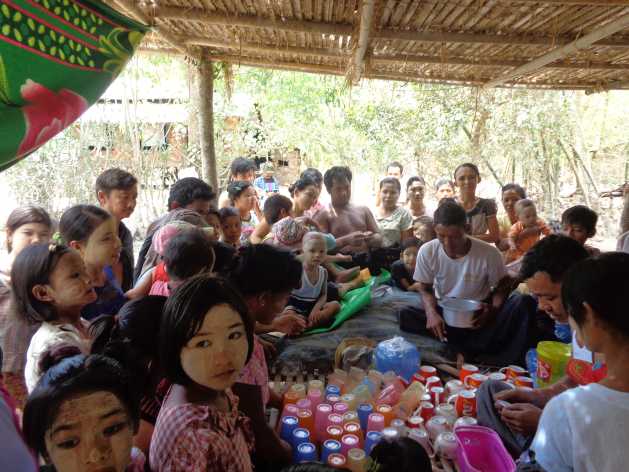Thursday, April 18, 2024
News and Views from the Global South
Water & Sanitation
Water Woes Put a Damper on Myanmar’s Surging Economy

People fetch water from the new well in the village of Htita, Myanmar. It is 600 feet deep and was built thanks to private donations. Credit: Sara Perria/IPS
- The central plains of Myanmar, bordered by mountains on the west and east, include the only semi-arid region in South East Asia – the Dry Zone, home to some 10 million people. This 13 percent of Myanmar’s territory sums up the challenges that the country faces with respect to water security: an uneven geographical and seasonal distribution of this natural resource, the increasing unpredictability of rain patterns due to climate change, and a lack of water management strategies to cope with extreme weather conditions.
Using water resources more wisely is critical, according to NGOs and institutional actors like the Global Water Partnership, which organized a high-level roundtable on water security issues in Yangon on May 24. UN data shows that only about five percent of the country’s potential water resources are being utilised, mostly by the agricultural sector. At the same time, growing urbanisation and the integration of Myanmar into the global economy after five decades of military dictatorship are enhancing demand.
The new government of the de facto leader Aung San Suu Kyi now faces the major challenge of delivering solutions to support the country’s rapid economic growth.

A hydroponic greenhouse allows farmers in Myanmar’s Dry Zone to grow vegetable saving up to 90 percent of water. The project is promoted by NGO Terres Des Hommes using technology developed by the University of Bologna and involves over 40 villages. Credit: Sara Perria/IPS

Water tanks and pots are used to store water all over Myanmar. Credit: Sara Perria/IPS

A water carrier in Myanmar’s Dry Zone. Credit: Sara Perria/IPS

The arid village of Htita, in Bago region, Myanmar. The artificial ponds traditionally used to collect water are empty at the end of the dry season. Credit: Sara Perria/IPS

Members of Myanmar’s Htee Tan village community. Credit: Sara Perria/IPS

A temporary water tank in Myanmar’s Dry Zone. Credit: Sara Perria/IPS

Water tanks and pots are used to store water all over Myanmar. Credit: Sara Perria/IPS

Speakers at the high level roundtable on Water Security and the Sustainable Development Goals held at Inya Lake Hotel in Yangon, Myanmar on May 24, 2016. Credit: Sara Perria/IPS

 Print
Print



